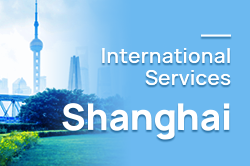A thread of hope


Wang Lin, 39, shows a very small bit of jelly to her students in the laboratory. The seemingly nondescript substance is sericin hydrogel, which plays a magical role in repairing damaged tissue.
Over the past decade, she has led her team to work round the clock to extract such sericin from natural silk and do experiments to prove its function of tissue regeneration and repair.
It's an unprecedented undertaking. Using natural silk, China's special biological material, makes her a pioneer in the country's regenerative medicine field.
Last month, Wang was awarded the China Youth May Fourth Medal-the top honor for outstanding young Chinese people.
Natural silk consists of silk fibroin and sericin. While silk fibroin is widely used in clinical practice, such as for surgical suture, sericin is often considered as a waste in the silk industry.
"We're the first in the biomedicine field to research sericin, opening up a new world. Our overseas counterparts have done much in-depth research about silk fibroin," Wang says.
She's director of the Clinical Laboratory Department and Research Center for Tissue Engineering and Regenerative Medicine of Union Hospital, Tongji Medical College, Huazhong University of Science and Technology.
In 2005, she went to the United States to pursue a doctorate in biomedicine at Brown University.
After that, she became a research fellow at Harvard University and visiting scholar at Michigan University, with great achievement in "regeneration and repair of skeletal muscle".
In 2011, she returned to her hometown Wuhan, Hubei province, and established Central China's first regenerative medicine center.

Sensing potential
The first research topic of the regenerative medicine center of Union Hospital was to find a suitable material to repair damaged nerves.
"As we had no idea which material was suitable, we had to continue our research through trial and error. We experienced numerous failures, which finally led to success," she says.
"The silk industry has a very long history in China, but we hardly knew anything about the potential of sericin in biomedicine. An idea suddenly struck me that sericin might be the way to crack the problem."
After extensive reading, she found that, while much literature and research is based on the clinical application of silk fibroin, the information about sericin was lacking, and what little she found was obsolete.
Therefore, she decided to figure out whether it was possible to use sericin in clinical practice.
The variables of experiments are many, such as temperature, reagents and the types of silkworm cocoon used. A small change means many more rounds of experiments.
After more than three years of research, she and her team successfully purified structurally intact sericin, with active bioactivity, obtaining a national invention patent authorization.
Wang says the new biological material, based on sericin, can be used in different aspects of regenerative medicine, especially in wound repair caused by road accidents and earthquakes or it can be applied in repairing thorax, myocardium, cartilage and tumor injuries.
For example, when a patient suffers from peripheral nerve deficiency, the common method is to reroute one's own healthy and less important nerves into the injured areas.
Wang's method is to transplant a nerve conduit made of sericin, which is biocompatible and degradable. It takes about 12 weeks for the nerves to regenerate and repair. She says it can greatly reduce the pain of patient if it's used in clinical practice.
"It will also be a great boon to patients who need an organ transplant or suffer organ failure, the number of which outnumber donors," she says.
She says it's necessary to synthesize different forms of sericin to be used in different areas. For example, using injectable sericin to repair myocardium in a minimally invasive way and using a sericin hydrogel to repair skin.
She and her team have also delved into the potential of sericin as a multifunctional nanoscale vehicle for cancer therapy.
She and her team have published dozens of theses, showing the results of the research, in authoritative international journals.
However, they are still a very long time away from clinical trials on human beings, due to the current research process and China's strict supervision rules. Their experiments are currently only undertaken on mice.
"Only after very thorough research can we pursue the process of putting it into clinical application," she says.
Extracellular matrix plays an important role in tissue repair. She says the key is how to design better biomimetic materials with sericin-to create an extracellular matrix that's much the same as the primary tissue, in terms of aperture and structure.
The departments for burns, hand surgery, vascular surgery, orthopedics and neurosurgery are all involved in researching the field of regenerative medicine.
She says, from a clinical perspective, their focus is on the traditional method of repair and they know the demand of patients. She believes it's important to work with each other in developing such cutting-edge technology.
"We often communicate with clinicians. When they have some difficulties, we try to come up with a solution from our perspective," she says.
Mission possible
As director of the Union Hospital's clinical laboratory department, she accepted an important mission at a critical moment during the sudden COVID-19 outbreak in Wuhan.
She had just given birth to her daughter, and had worked without rest with her colleagues to establish the hospital's nucleic acid testing laboratory in under two days, which is still in use.
The difficulty was the lack of equipment, the heavy workload and great pressure. She says they were able to put up with such hardships due to their strong will.
The laboratory received about 6,000 to 7,000 samples most per day, and all were single-person inspections because they were from patients. At that time, the most urgent was diagnosis.
Her team of over 30 people worked day and night and the equipment was always on, during the city's 76-day lockdown. The laboratory undertook the most of nucleic acid tests in the province.
They've also done research about the detection technology of COVID-19 and established a predictive model.
"Those who inspect the nucleic acid tests are working in anonymity, facing the virus directly, like invisible heroes and heroines. At the critical moment, medical professionals have to step forward with courage," she says.
They had to wear heavy protective apparel and exposed themselves to possible aerosol infection because, at the time, there was no P2 laboratory that ensured biosafety.
She says now they have better equipment and protective gear. For patients in critical condition, they offer a fast method to test.
"No matter whether it is cutting-edge technology or pandemic prevention work, my mission is always to meet the demand of my patients and our country," she says.
"It's a doctor's duty to heal the wounded and rescue the dying. I like being a doctor and it's the right profession for me. I'm able to work under great pressure and concentrate on my duty, and I always maintain an enthusiasm for study."




